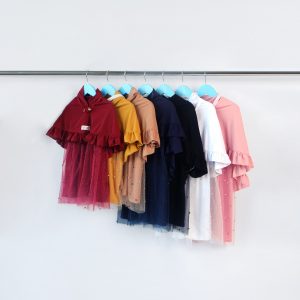The topics “Industry 4.0” and “Digitization” have occupied all industries for some time, not just logistics.
On the one hand, digitization often causes tension and concern with regard to its implementation and consequences. On the other hand, its potential to make processes easier, more transparent, more accessible and more responsive is still enormous.
Therefore, all over the world, people continue to work diligently to realize and optimize the digitalization of their own industries, an undertaking that is particularly valuable in times of globalization and crises such as the Corona pandemic.
In the textile industry, the goal of a batch size of one has been one of the topics regularly discussed in the context of industry 4.0 for several years.
Why a batch size of one?
The batch size describes the quantity of products that are manufactured in one production run. In the majority of cases, this quantity is chosen quite high for series productions in order to prevent having to retool required machines several times during the production cycle and thus to avoid losing time and money.
A batch of one, however, describes a single-item production or a make-to-order production.
Thereby batches of one allow offering tailor-made products to the customer, since products that were designed by the customer individually at any rate have to be manufactured in single-item productions.
The storage space and the associated high storage costs, which are required for larger batch sizes, can be saved and products are rarely produced in excess of the quantity actually sold.
Batches of one in the textile industry
The batch size of one is a particularly exciting topic for the textile industry. Thanks to one-off production, customers can design their own garments – which means choosing the cut, patterns and materials.
 At the DTB info day at HUGO BOSS, new technologies and concepts used for make-to-order production were discussed. 3D design for example can be used to check and adjust both fit and cut of clothing items. In addition, digital material databases provide an overview of the available fabrics, yarns and other materials.
At the DTB info day at HUGO BOSS, new technologies and concepts used for make-to-order production were discussed. 3D design for example can be used to check and adjust both fit and cut of clothing items. In addition, digital material databases provide an overview of the available fabrics, yarns and other materials.
Some companies are already able to produce batches of one at the same cost as mass production. Impressive examples of this were shown again at this year’s texprocess.
For some years now, microfactories have been demonstrating their progress in establishing ever more powerful production chains (from design to manufacturing to the finished product) on site.
To achieve these kinds of production chains, transparent organization, communication and coordination are required. Therefore, a central IT solution that communicates data seamlessly and in real time must be utilized.
Technologies needed to realize batches of one exist, they just have to be put to use!
Currently batches of one are pursued particularly in the context of microfactories and by large companies for high-priced fashion.
It remains to be seen whether the trend towards batches of one will actually be feasible and meaningful for companies of all sizes and product ranges in the textile industry.
What about other industries?
The trend of single-item productions is not limited to the textile industry, as this year’s German Industry 4.0 Index by Staufen AG and Staufen Digital Neonex GmbH shows.
A total of 323 companies from various sectors were surveyed in Germany during the summer of 2019 on several topics relating to industry 4.0 and digitization. Many of these companies, around 70%, are part of the electrical engineering industry, the automotive industry and the mechanical and plant engineering industry.
In fact, the index shows that 40% of the companies that already deal with industry 4.0 do so precisely because of the trend towards a batch size of one.
As many as 60% of the companies are already manufacturing products with batches of one at the same cost as mass productions or plan to do so within a maximum of 10 years. The topic of batches of one is predominantly thought of as an important strategic topic, both for the own company and for the own industry.
Only 14% of the companies state that they will most likely never be in a position to carry out one-off production at the same cost as series production.
This assessment may be correct. The efficient implementation of a batch size of one might not be possible for every company of every industry.
Nevertheless, the process of further digitization may not simply be disregarded, neither in the textile industry nor in any other:
All companies must face the challenge of digitization time and time again. Trends are moving in the direction of batches of one and individualized productions.
And those who do not continue to optimize their own digitization even after its introduction and who do not react to new technologies of their industries will lose out.
